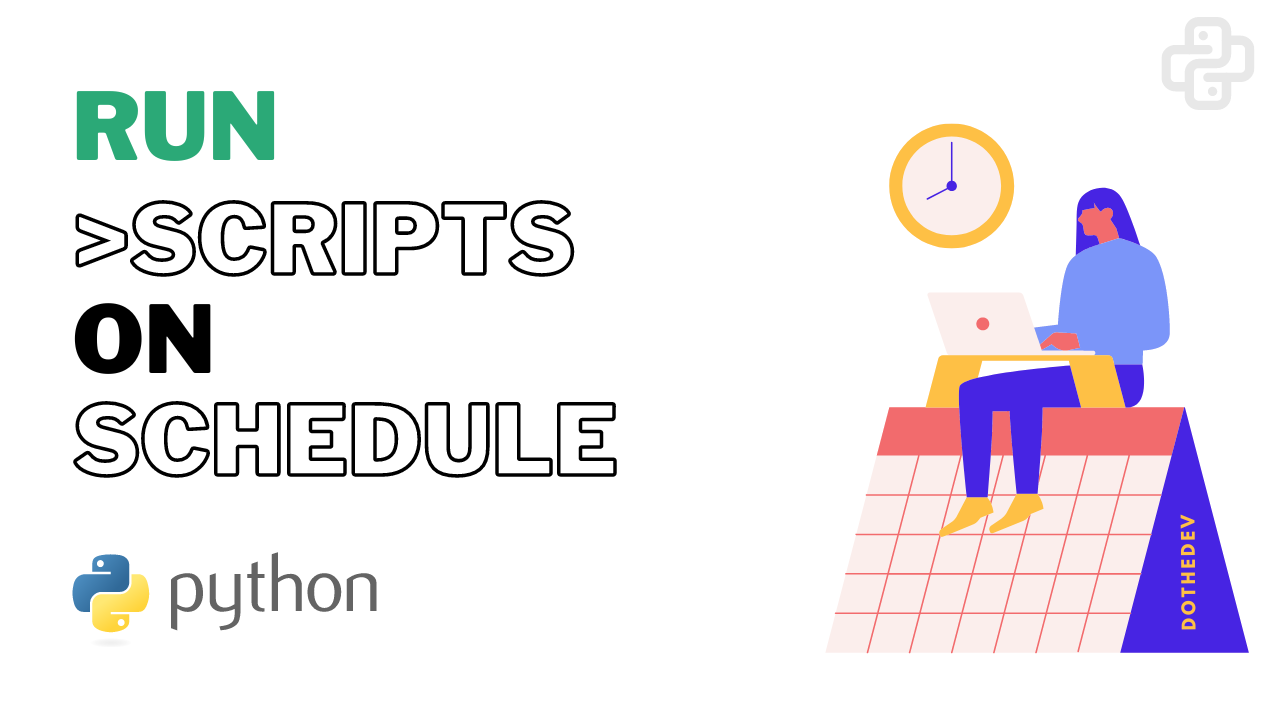
Feel free to contact.

06 May 2024

Efficiently managing tasks is crucial for modern applications, whether it's routinely checking APIs, monitoring system health, or implementing auto-scaling features. Even platforms like Kubernetes and Apache Mesos rely on periodic checks to ensure smooth application operation.
To maintain a clear separation between task execution and core business logic, independent execution queues such as Redis queues are often utilized. In this article, we’ll delve into various techniques for scheduling and executing Python jobs through practical tutorials. These methods include basic loops, threaded loops for concurrency, the Schedule Library for task scheduling, Python Crontab for time-based scheduling, and RQ Scheduler for leveraging decoupled queues.
Simple Loop Employing simple loops to set up jobs is a straightforward approach. It involves running a continuous while loop that intermittently triggers a specific function. Though there are more efficient methods available, this direct approach gets the job done.
To introduce time intervals between function calls, the sleep function from Python’s built-in time module can be utilized. Despite its lower visual appeal and readability compared to other methods, scheduling Python jobs with simple loops involves using the time module to create a loop that executes a designated function at predetermined time intervals.
import time
def scheduled_job():
print("This is a scheduled job")
while True:
scheduled_job()
time.sleep(10) # Run the job every 10 seconds
However, it's important to note a drawback of this method: it's not suitable for extensive or intricate tasks as it may obstruct the main thread, leading to application unresponsiveness.
Threaded Loops To address blocking issues, consider using simple threaded loops with Python’s threading module. This technique resembles simple loops, but instead of relying on a single loop, a new thread is generated for each task to be executed.
import threading
import time
def job():
print("This is a scheduled job")
def run_threaded(job_func):
job_thread = threading.Thread(target=job_func)
job_thread.start()
while True:
run_threaded(job)
time.sleep(60)
A common challenge with this approach is that once a thread is started, the primary program cannot modify its behavior, requiring additional resources or logic for responsiveness to specific conditions.
Utilizing the Schedule Library While simple loops lack visual appeal, this can be remedied by using a scheduling library such as Schedule.
import schedule
import time
def job():
print("I'm working...")
schedule.every(10).seconds.do(job)
while True:
schedule.run_pending()
time.sleep(1)
This method offers cleaner and more readable code compared to while loops. However, a drawback is that the Schedule library may cease running if the employing process or program terminates, leading to missed job executions or incomplete schedules.
Python Crontab Python Crontab automates tasks at specified intervals using syntax similar to the UNIX cron utility. It enables precise scheduling by articulating rules using the crontab syntax.
from crontab import CronTab
# Create a new crontab object
cron = CronTab(user='username')
# Add a new cron job to run the script every day at 6 AM
job = cron.new(command='python /path/to/script.py')
job.setall('0 6 *')
# Write the job to the user's crontab
cron.write()
One thing to note is that the write() method must be manually executed to save schedules in Python-Crontab, as the library lacks an auto-save feature.
RQ Scheduler For tasks that cannot be immediately performed, job queuing becomes essential. Python-rq, utilizing Redis as a broker, facilitates job queuing. Rq-scheduler is used for scheduling these queued jobs.
from datetime import datetime, timedelta
from redis import Redis
from rq_scheduler import Scheduler
# Create a connection to Redis
redis_conn = Redis(host='localhost', port=6379)
# Create a scheduler object
scheduler = Scheduler(connection=redis_conn)
# Define the job function
def my_job():
print("Hello, world!")
# Schedule the job to run every minute
scheduler.schedule(
scheduled_time=datetime.utcnow(), # Start immediately
func=my_job,
interval=timedelta(minutes=1)
)
A challenge with RQ scheduling is the requirement for a distinct worker process to execute jobs, which may not be feasible for smaller applications.
Integrating Python with Redwood RunMyJobs Redwood RunMyJobs is a comprehensive job scheduling and workflow management system. Integrating Python with RunMyJobs involves installing the RunMyJobs Python Client Library, creating a Python script for the job, uploading it to RunMyJobs, defining a job in RunMyJobs, submitting the job, and monitoring its status.
Python offers versatile approaches to task scheduling, catering to various complexities and requirements. Choosing the right method depends on factors like task complexity, time intervals, and monitoring needs. Tools like Redwood RunMyJobs can streamline Python workflows and job dependencies, enhancing automation and monitoring capabilities.